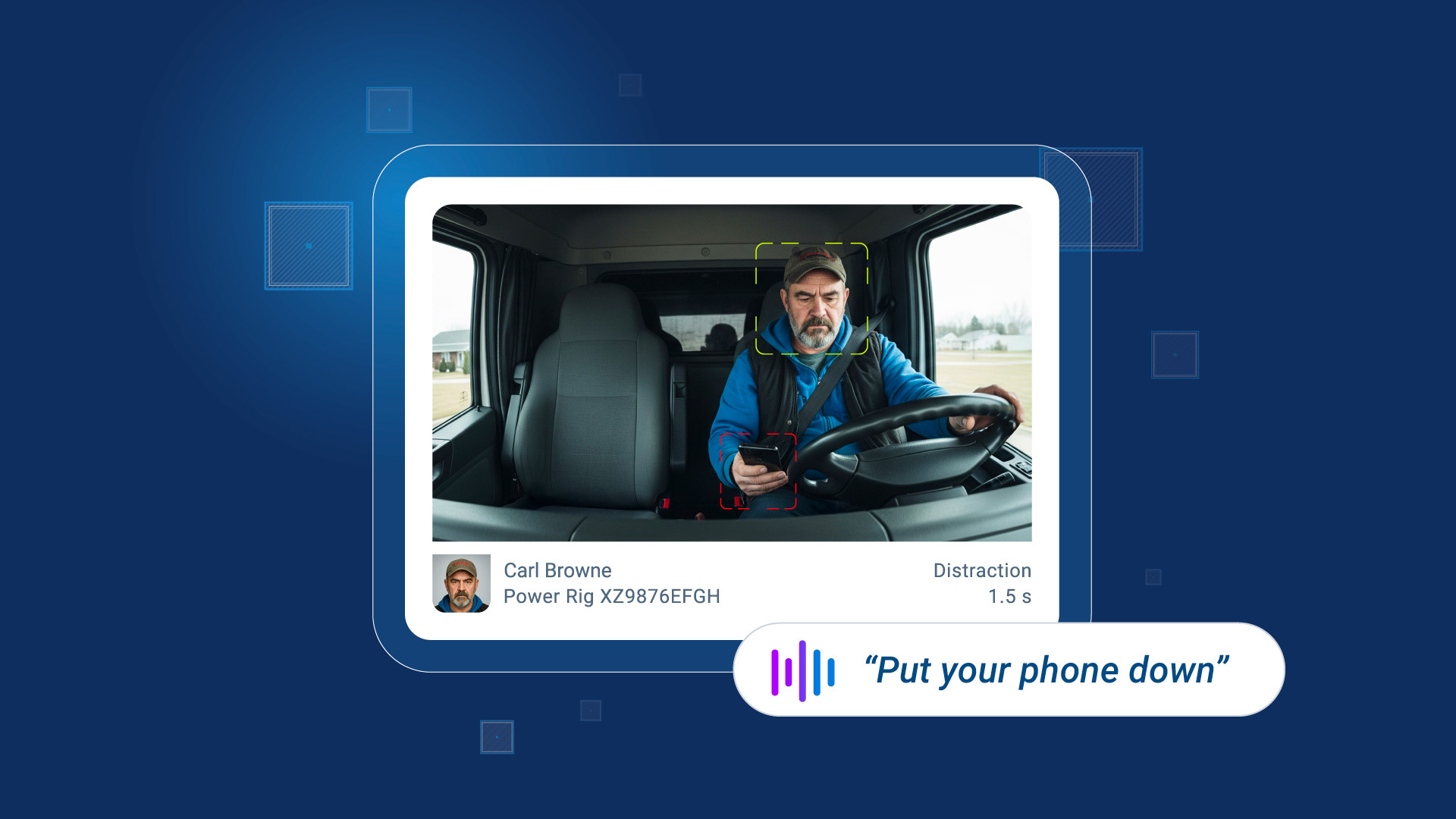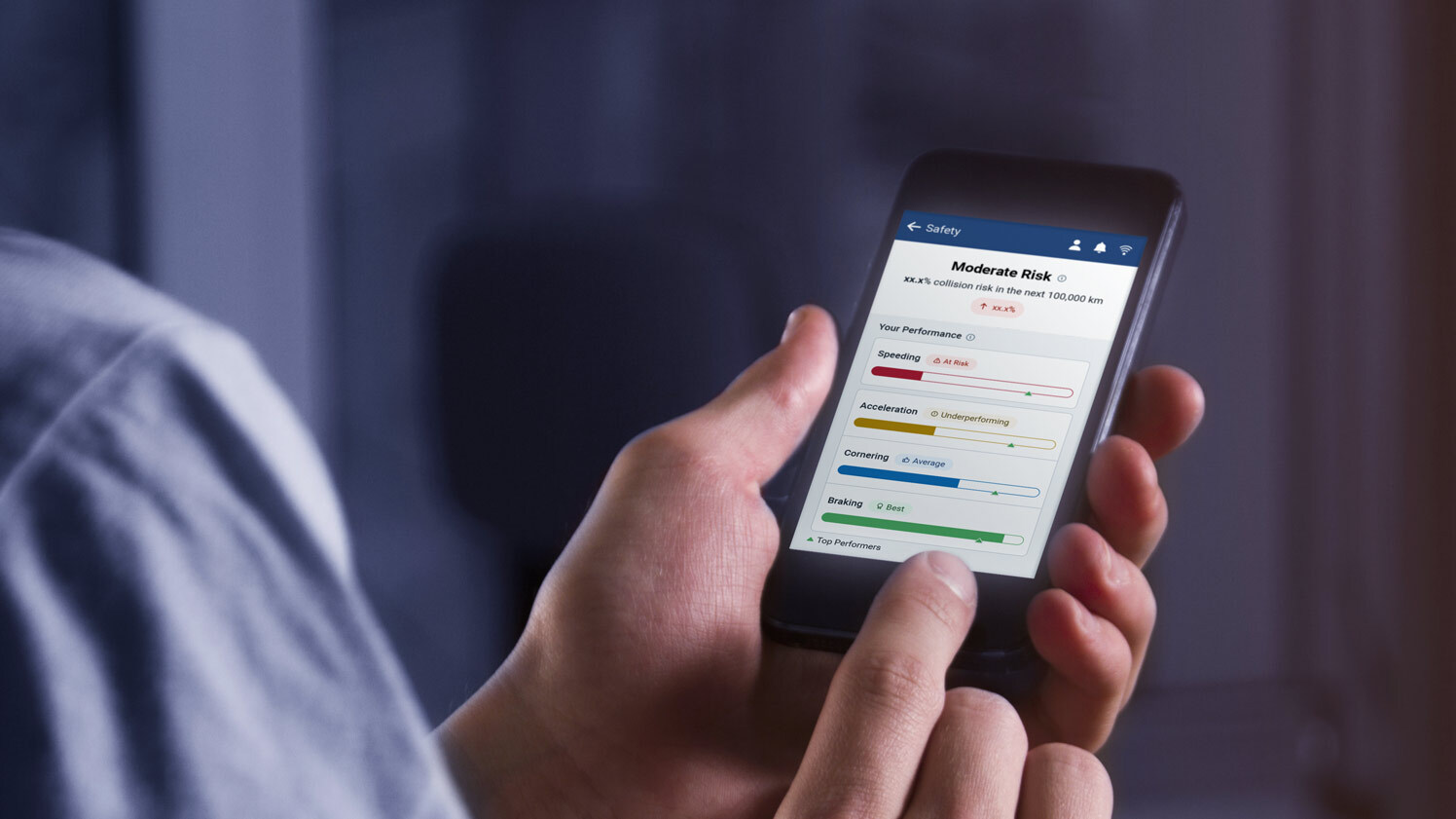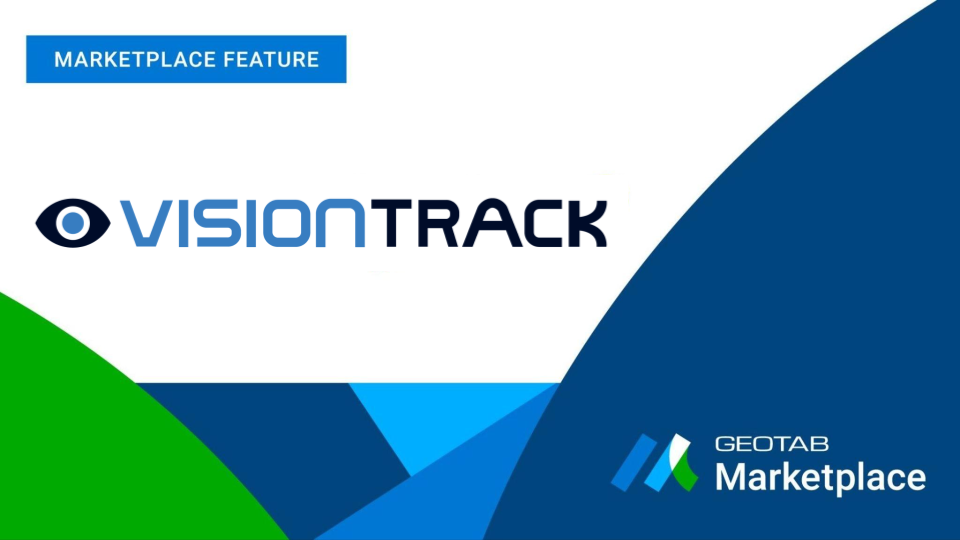Four major benefits of telematics for risk management in the public sector
Data-powered decisions help fleet managers mitigate risk in the public sector, where safety and efficiency are paramount.
By Geotab Team
Nov 15, 2024

A public sector fleet faces many challenges that are well-monitored in the public eye. These include keeping constituents safe and providing essential services while using taxpayer dollars as efficiently as possible. Public sector fleets juggle these responsibilities in tandem with managing the associated risks they incur when their crews are out completing activities in the community, both for equipment and drivers.
Telematics data can assist in keeping those risks at bay while helping fleets drive tangible, measurable outcomes. Here are four ways that telematics can help public sector fleets manage their risk levels.
Protect employees and the communities they serve
Safety is the number one topic on most public sector fleet managers' minds. Road traffic collisions are the leading cause of death in the U.S. for people ages 1-54. Staying safe on the roads is imperative for drivers and citizens, and fleet managers continuously look for ways to improve their collision rates, ideally getting them to zero.
Fleet managers should also be aware that the average collision cost to an employer is $16,500 and that preventable driver mistakes are responsible for 87% of traffic accidents. Given the added financial consequences a fleet must overcome if an accident occurs, public sector fleets must find ways to promote safer, more defensive driving by their employees to limit risk. But, how should they start?
Driver behavioral changes are a good place to begin because they have the largest impact on reduced collision rates. Telematics data can help implement those new safety measures by highlighting problem areas and spurring fleet managers to take action with valuable insights. Reporting on seat belt usage, obeying speed limits, driving without distractions or using phones are all keys to a safer driving environment. In fact, studies show that distracted driving from texting multiplies the likelihood of an accident occurring by 23. With increased visibility into risk and safety reports with driver ratings – as well as video telematics – driver coaching strategies are supported by facts, not opinions.
Did you know: In 2023, fleets equipped with Geotab’s AI and integrated safety features witnessed a potential collision rate reduction of 40%, or 3,500 fewer collisions.
Keeping equipment and vehicles in tip-top shape reduces the risk of collision or unsafe breakdown. Telematics has a proven advantage in being able to proactively identify vehicles in need of maintenance. This helps minimize risk by preemptively and remotely notifying fleet managers of engine fault codes, oil or coolant levels and brake pad statuses to keep vehicles in optimal working condition. Brake predictions allow a fleet manager to remotely detect the health and ability of a vehicle to stop at a reasonable distance. According to NHTSA, over one-fifth of the collisions caused by vehicle-related issues are brake related. Telematics insights, like a vehicle health score, allow fleet managers to remove any risky assets on the street.
Safety benchmarking is another critical tool for agencies that are looking to assess their fleets’ current safety standing. By comparing their vehicles’ safety metrics to anonymized data from other similar fleets, managers are able to quickly identify where improvement is needed and take action. With Geotab’s safety benchmarking capabilities, users can can see:
- Collision rates go down by 19.1%
- Harsh braking reduce by 11.8%
- Harsh cornering reduce by 5.6%
- Speeding decrease by 6.4%
By addressing safety from both a vehicle maintenance and a behavioral perspective, public sector fleets are empowered to take a multifaceted approach when improving their fleets’ performance.
See also: Learn how the City of Raleigh was able to double their global driver safety score in a three-month span using Geotab.
Meet or exceed service expectations
No public works agency wants to face penalties for not meeting their service mandates. A consistent service level is a core tenant of their work in the community. Telematics brings a comprehensive view into all road activity that a public works fleet is completing and that service levels are met.
Tracking service compliance in real-time with interactive maps gives fleet managers peace of mind that they will hit their mandates. Productivity benchmarks can be established for repeatable processes and areas for improvement can also be identified.
To add transparency regarding public works operations, the Citizen Insights platform from Geotab allows agencies to share live statuses of when certain road activities are completed. A public works agency can develop trust through accountability by giving the community access to see when a road has been cleared of snow or when trash has been picked up. This level of transparency also acts as a safeguard so an agency does not risk falling short of its service standards and can provide factual evidence of first-rate service being completed.
See also: How government agencies can use telematics to increase transparency and accountability
Lower insurance costs
When it comes to insurance costs, there are some fleet parameters outside of a manager’s control. The fleet size, the types of vehicles in the fleet and any prior collisions or claim history can contribute to higher insurance premiums. However, by managing risk through safer driving, fleet insurance costs should decrease.
Certain driver behaviors like fast acceleration, hard braking and speeding are risk factors for setting insurance rates, along with contextual data such as urban versus rural driving, road conditions, time of day and traffic congestion. With telematics providing real-world data and a realistic view of risk, premium discounts could factor in. Applying data-driven coaching techniques to keep a check on aggressive behavior should result in a reduced risk of collision, giving you a leg up with insurance providers to negotiate a lower premium expense. Having training courses on drivers’ records helps strengthen a manager’s commitment to safe, effective driving in the eyes of an insurer.
Fleets equipped with dash cams also limit risky driving behavior, including tailgating, lane departures and drowsy or distracted driving. Fleet dash cams additionally provide unequivocal proof in the case of a collision and can help lower the cost of any incurred insurance claims.
See also: The complete guide to fleet vehicle insurance
Dispute claims and reduce litigation settlements
Lawsuits are unfortunately commonplace for government fleets, whether they’re warranted or not. Telematics data can be a fleet management tool to combat those fraudulent claim scenarios, like citizens arguing that a street has not been plowed or that damage to a private vehicle was caused by a snowplow or waste truck. Collisions happen (albeit hopefully fewer) with proper driver safety coaching and ongoing reporting. Telematics helps to put the puzzle pieces together for reconstructing just what happened during the collision.
Collision reconstruction is an add-in offered by Geotab that allows users to view, analyze and interpret collision data. It can be incredibly powerful when presenting the facts to show the position and the point of impact of any collision in the fleet, along with important information like speed profiles, RPM and accelerometer data during the collision. Rebuilding the events surrounding a collision is vital for insurance claims and protection from potential litigation.
In addition to collision reconstruction, detecting collisions and collision risk before an incident happens is critical to better fleet safety and reduced liability. Assistive technologies like ADAS systems and predictive analytics supersede a human’s split-second capability to process or calculate risk. On the road, ADAS systems can take over a vehicle to prevent an imminent collision quickly, while predictive analytics show fleet managers at the office the longer-term risk trends associated with their fleets’ performance. Protecting against both litigation and potential injury using these forward-thinking technologies is essential for public sector fleets.
Did you know: Nuclear verdicts are plaintiff settlements of $10 million or more for wrongful deaths or personal injury. Between 2013 and 2022, these payouts reached an average of $88.9 million.
See also: Collision reconstruction with telematics
Play it safe with telematics
Operating a public sector fleet doesn’t have to be risky business with telematics there to provide a safety net. From improving driver safety to limiting the impact from a collision, data-powered reporting and insights help build an effective strategy for mitigating risk for a public sector fleet.
Visit our government fleet management site for more information.
Subscribe to get industry tips and insights
The Geotab Team write about company news.
Table of Contents
Subscribe to get industry tips and insights
Related posts

How AI dash cams help fleets tackle distracted driving and reduce collisions
October 23, 2025
4 minute read

How Geotab’s Predictive Safety Model helps fleets prevent collisions before they happen
October 17, 2025
2 minute read

Slash fleet costs: Key strategies for a stronger police budget
October 14, 2025
5 minute read

From data to foresight: How VisionTrack is transforming fleet safety
October 14, 2025
2 minute read

School bus safety week: The top solutions for safer student journeys
October 7, 2025
4 minute read
